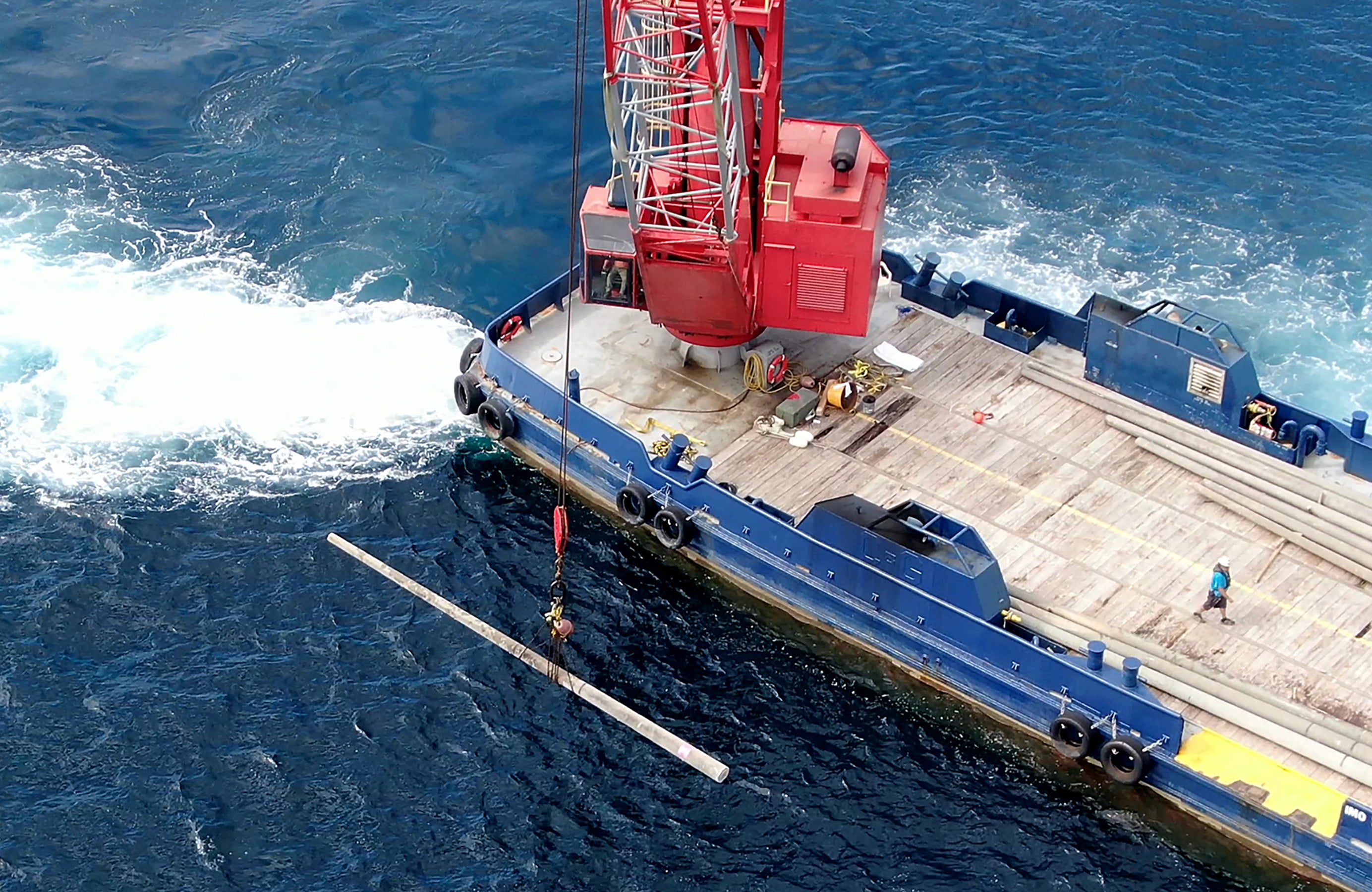By DAVID RAINER, Alabama Department of Conservation and Natural Resources
With landfills reaching capacity, what could be a better way to repurpose decommissioned equipment than using it to build habitat for Alabama’s great offshore fisheries?
Alabama Power Company recently teamed up with the Alabama Department of Conservation and Natural Resources’ (ADCNR) Marine Resources Division (MRD) to take end-of-life concrete poles and tower segments to build a new reef in the (Conservation Commissioner) Christopher M. Blankenship Reef Zone that covers 65 miles of Gulf of Mexico bottom between 10 and 20 miles off the Alabama coast.
Both Jason Carlee, Alabama Power’s Manager of Water Field Services in the Environmental Affairs Division, and Craig Newton, MRD’s Artificial Reef Coordinator, noted the arrangement of the concrete poles in the September 19 deployment reminded them of the old game Pick Up Sticks.
“We appreciate the opportunity to partner with the state,” Carlee said. “This is the fourth reef that Alabama Power has deployed. This reef used concrete distribution and transmission poles and steel lattice from transmission towers. We used The Reefmaker out of Orange Beach to deploy the material, and Stewart Walter is very accurate with where he puts the material. The goal was to stack the poles in a crisscross pattern, kind of like Pick Up Sticks, to get some relief and not just lying flat on the bottom. He also added some transmission tower segments among the poles. There is a lot of surface area on those concrete poles for barnacles and other marine life to get that reef complex started.”
Newton, who oversees Alabama’s unparalleled reef zones that cover more than 1,200 square miles of bottom on the Gulf of Mexico, said the Blankenship Reef Zone was permitted in 2021 and named in honor of the Commissioner by Governor Kay Ivey. Soon after the permit was issued, MRD started deploying reefs in the zone and ended with 123 reefs using 164 super pyramid reef structures before the latest deployments.
“We developed a mutually beneficial partnership with Alabama Power, and they repurposed these concrete power poles and other material to construct this additional reef in the Blankenship Reef Zone that significantly increased the diversity of habitat types that are available to the reef fish in that area,” Newton said. “The concrete poles provide a unique habitat that is different from the 25-foot-tall concrete pyramids in that there are more nooks and crannies for fish, crabs and invertebrates to seek refuge and inhabit. It’s an exceptionally diverse reef habitat in 90 feet of water.
“I’m not sure kids today would know what Pick Up Sticks are, but, if you can, picture a configuration that resembles Pick Up Sticks in the way these concrete poles were deployed. In addition to the power poles, sections of a transmission tower were deployed adjacent to and on top of the power poles. That provides higher vertical relief and also a significant number of small, interstitial spaces.”
Newton said the reef will be prime habitat for red snapper, Alabama’s signature reef species, as well as gray triggerfish and gray (mangrove) snapper.
“It should be especially productive for producing gray snapper,” he said. “Their behavior is such that they prefer to have relatively tight, close quarters with the habitat. This power pole configuration and the transmission tower sections will provide this unique habitat for the gray snapper to thrive in.”
Commissioner Blankenship foresees a long relationship with Alabama Power to continue building reefs off the Alabama coast.
“I appreciate the reef-building partnership with Alabama Power,” Commissioner Blankenship said. “Their commitment to sustainability by repurposing end-of-service-life material to create new living habitat for marine organisms is commendable. The Alabama Power staff and leadership have been great to work with. I look forward to many future projects.”








